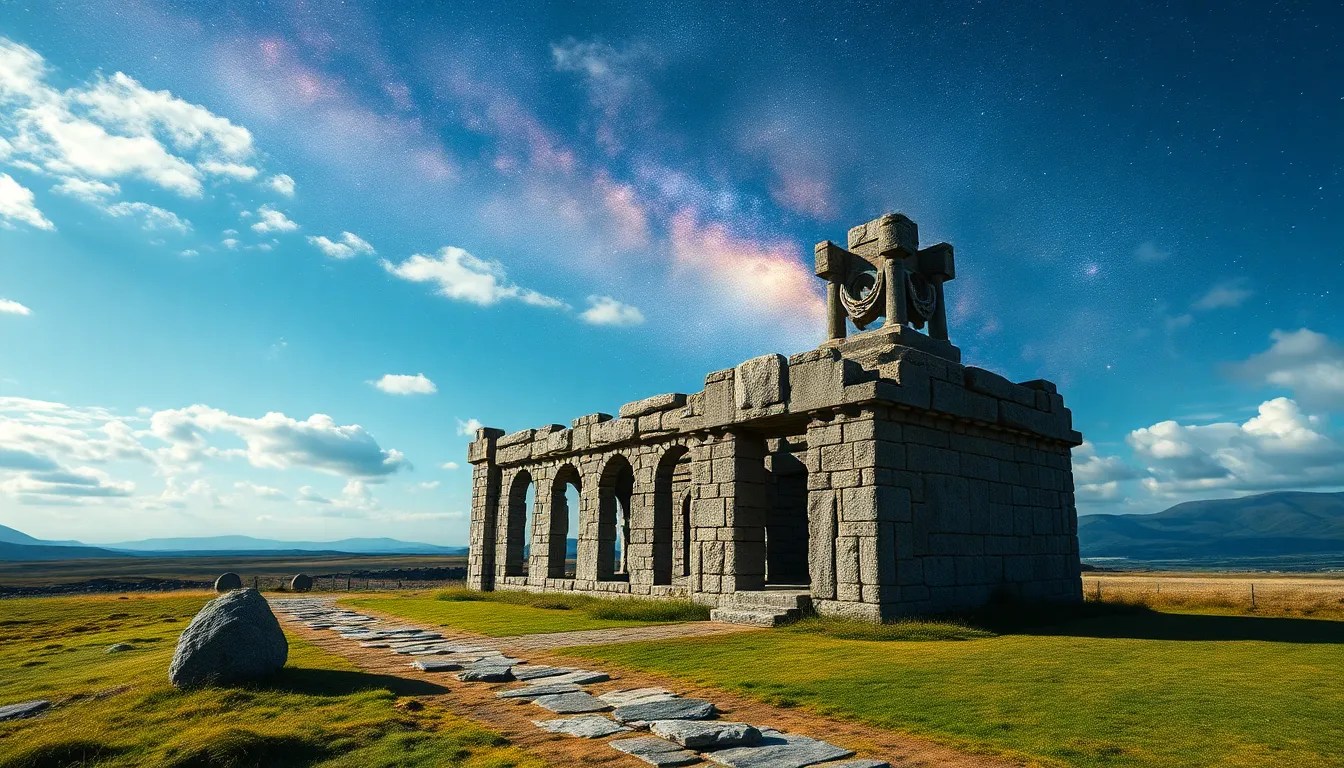The Cosmic Significance of Sacred Sites in Celtic Culture
I. Introduction
Celtic mythology is a rich tapestry of stories, beliefs, and traditions that reflect the deep spiritual connection the Celts had with their landscape. Sacred sites play a pivotal role in this mythology, serving as bridges between the earthly realm and the divine. Understanding the cosmic significance of these locations not only sheds light on ancient Celtic beliefs but also emphasizes the enduring legacy of these sites in contemporary culture.
II. Defining Sacred Sites in Celtic Culture
Sacred sites in Celtic culture are locations imbued with spiritual significance. These sites often reflect the Celts’ reverence for nature and their understanding of the cosmos. The characteristics of these sacred sites include:
- Natural formations such as mountains, rivers, and stones that were believed to be inhabited by spirits.
- Structures constructed with astronomical alignments, often used for rituals and ceremonies.
- A sense of place that evokes a connection to ancient myths and ancestral heritage.
Some well-known examples of sacred sites include:
- Stonehenge – A prehistoric monument in England, famous for its massive stone circle and astronomical alignments.
- Newgrange – A Neolithic passage tomb in Ireland, renowned for its winter solstice illumination.
- Tara – An ancient ceremonial site in Ireland, associated with kingship and mythology.
III. The Intersection of Nature and the Divine
The Celts viewed nature as a living entity, imbued with spirit and divine presence. Natural landscapes played a crucial role in Celtic spirituality, serving as sacred backdrops for rituals and gatherings. Sacred sites reflect the belief in the interconnectedness of all life; every stone, tree, river, and hill was thought to be a part of a larger cosmic order. This interconnectedness is evident in:
- The reverence for sacred groves and forests, seen as dwellings for deities and spirits.
- The significance of rivers and lakes as sources of life and transformation.
- The importance of mountains as symbols of strength and permanence.
IV. Cosmology and Sacred Architecture
The architectural features of sacred sites often reflect the Celts’ understanding of cosmology. Many sacred sites are aligned with celestial bodies, demonstrating a sophisticated knowledge of astronomy:
- Sacred sites like Newgrange are precisely aligned with the rising sun during the winter solstice, symbolizing rebirth and renewal.
- Stone circles, such as those at Avebury, are oriented towards significant celestial events like solstices and equinoxes.
These alignments indicate that the Celts viewed their sacred sites not just as places of worship, but as integral components of a larger cosmic framework. The architectural design of these sites often includes:
- Passage tombs with intricate carvings that may represent cosmic symbols.
- Enclosures that create a sense of sacred space, demarcating the boundary between the mundane and the divine.
V. Myths and Legends Associated with Sacred Sites
Key myths illustrate the significance of specific locations in Celtic culture. These narratives often involve deities, heroes, and spirits, reinforcing the sacredness of the sites:
- The story of Dagda and the Hill of Tara, where he is said to have ruled and communicated with the otherworld.
- The tale of Brigid, whose sacred well is associated with healing and fertility.
- Legends surrounding Stonehenge, which was thought to be built by giants or as a temple for Druidic ceremonies.
These myths not only enrich the cultural heritage but also serve as a means of understanding the spiritual significance of the sites and their connection to the cosmos.
VI. Ritual Practices and Their Cosmic Implications
Rituals performed at sacred sites were deeply intertwined with the cosmos, serving multiple purposes:
- To honor the deities associated with the site, ensuring their favor and protection.
- To mark seasonal changes and agricultural cycles, aligning human activity with cosmic rhythms.
- To facilitate communication with the otherworld and the spirits that inhabit these locations.
These rituals often involved offerings, ceremonies, and gatherings that fostered a sense of community and connectedness to the land and the cosmos.
VII. Modern Interpretations and Preservation of Sacred Sites
In contemporary Celtic spirituality, ancient sacred sites hold significant meaning. Many modern practitioners seek to reconnect with the wisdom of their ancestors by visiting these locations. Contemporary significance includes:
- Using sacred sites as places for personal reflection, meditation, and connection to nature.
- Incorporating the myths and legends associated with these sites into modern practices.
- Advocating for the protection and preservation of these sites as cultural and historical treasures.
Efforts to preserve and honor these sites are crucial in today’s culture, ensuring that future generations can appreciate and learn from the rich spiritual heritage they represent.
VIII. Conclusion
The cosmic significance of sacred sites in Celtic culture reveals a profound understanding of the interconnectedness of life, nature, and the universe. These locations serve as reminders of a time when spirituality was intimately tied to the land, and they continue to resonate with those seeking to explore their Celtic identity and spirituality today. By recognizing the importance of these sacred sites, we can appreciate their role in shaping not only Celtic mythology but also our contemporary understanding of spirituality and connection to the cosmos.



